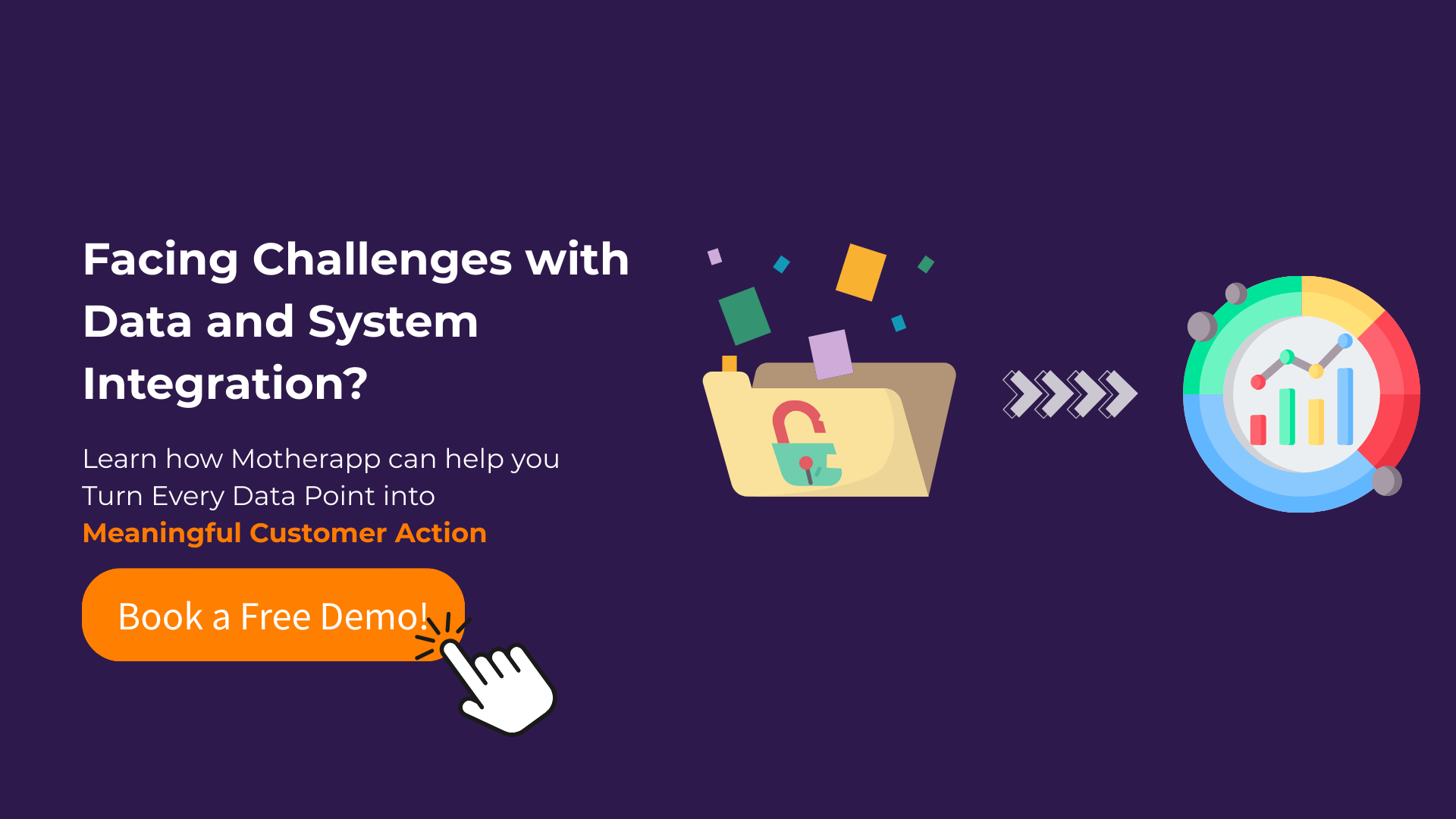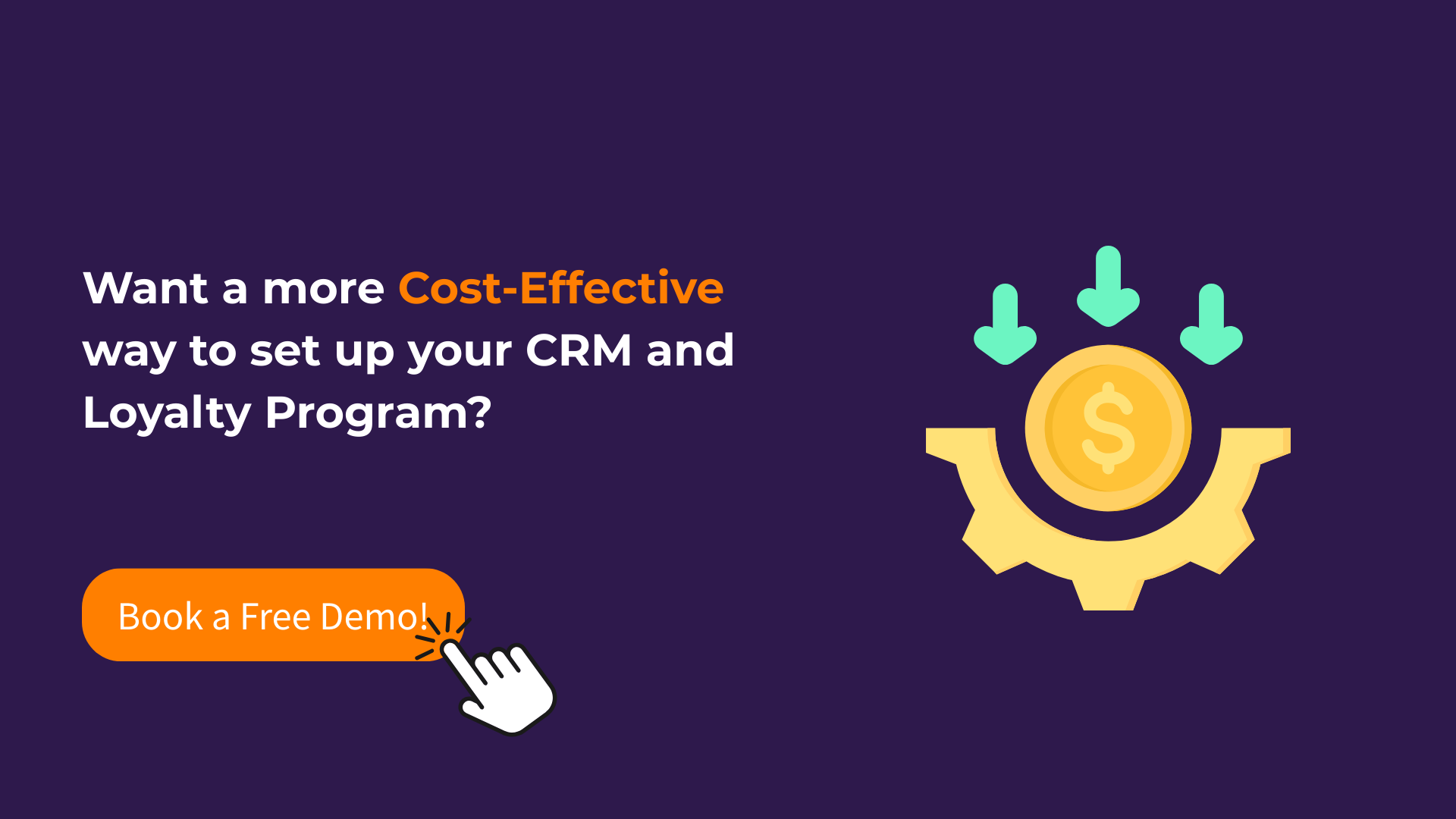Customer loyalty is no longer optional—it’s a competitive advantage. In 2025, brands that leverage personalized engagement and unified loyalty systems will drive stronger retention, higher revenue, and long-term customer advocacy. In this article, we compare strategies and tools—backed by success cases like Club Kapok and Asia Miles—to help your brand win customer loyalty in a fragmented, omnichannel world.
[Click] Jump straight to the comparison section.
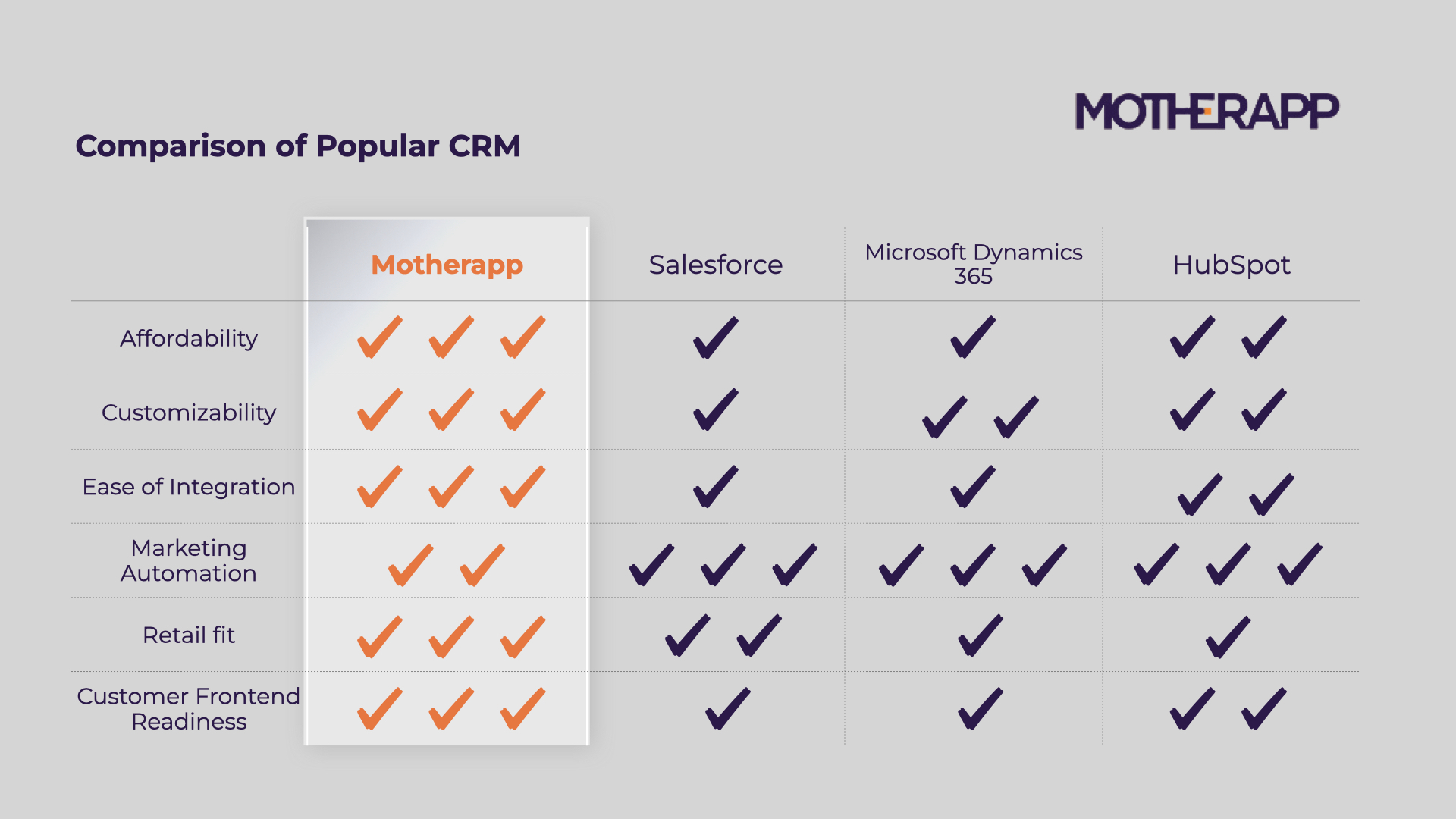
Motherapp’s personalized loyalty CRM platform offers an affordable solution that helps retail clients implement a system tailored to their specific needs.
What is customer loyalty?
Customer loyalty is the ongoing relationship between a customer and a brand, characterized by repeat purchases, customer engagement, and advocacy. It’s not just about how often a customer buys from you—it’s about the emotional connection they form with your brand.
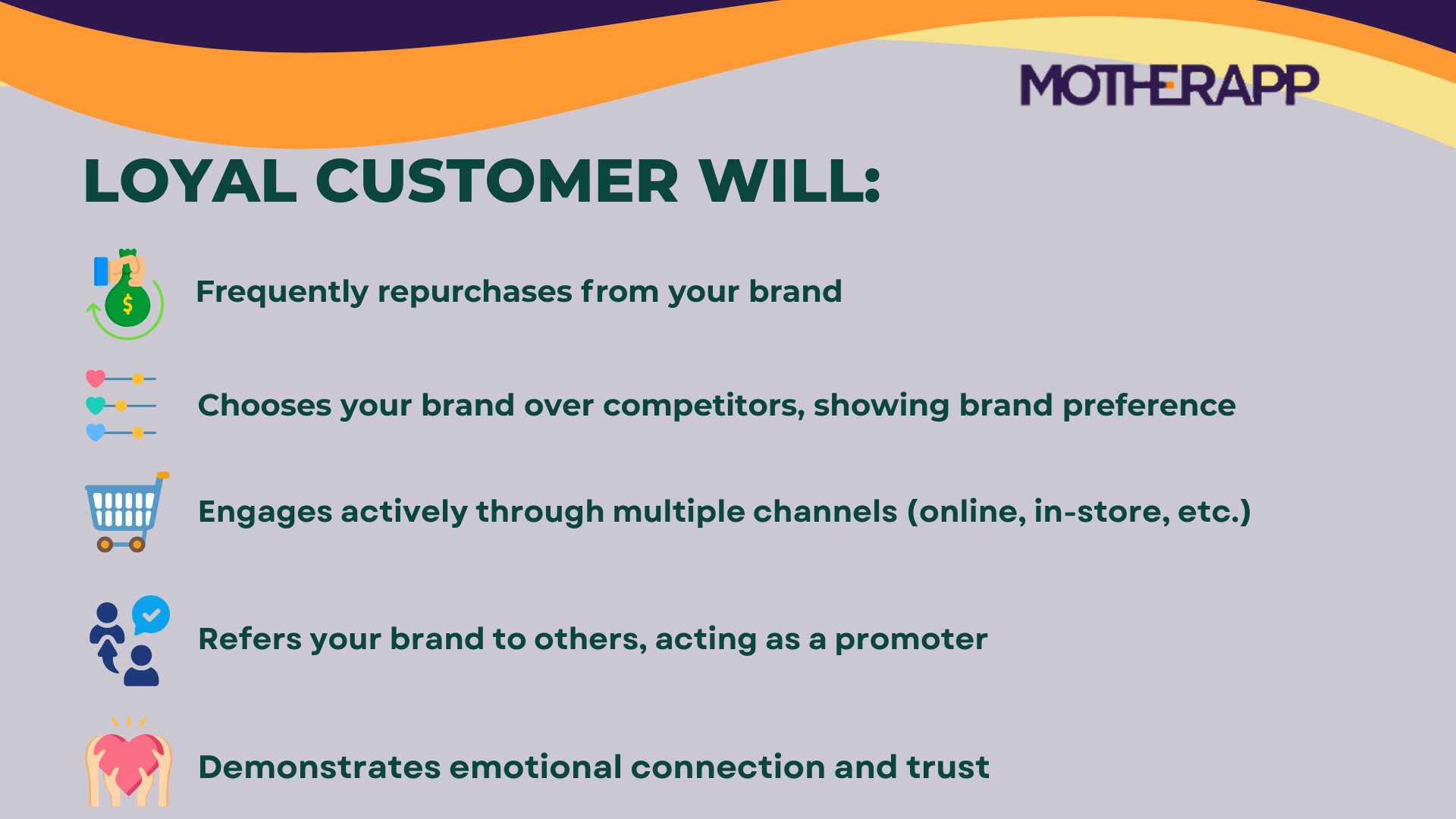
Definition of Loyal Customer
Why is customer loyalty important?
1. Retaining Customers Is Cheaper Than Acquiring New Ones
According to research from Harvard Business Review, acquiring a new customer can cost 5 to 25 times more than retaining an existing one. Moreover, increasing customer retention rates by just 5% can lead to a 25–95% increase in profits.
In today’s competitive business environment, customer acquisition has become increasingly expensive. From paid advertising to sales incentives and onboarding processes, the cost of attracting new customers can quickly add up.
On the other hand, retaining an existing customer—who already has experienced your product or service—requires significantly less investment.
Moreover, loyal customers not only spend more over time but are also more likely to stay with the brand during downturns. For example, a retail brand with a robust loyalty program might notice that repeat customers return during seasonal sales, even without high marketing spend—showing the long-term value of retention-focused strategies.
Read More: Resilient Growth Strategies in Tough Times
Therefore, rather than allocating a large budget to constantly attract new customers, brands that prioritize retention can achieve more sustainable growth and higher lifetime customer value.
2. Increasing Higher Average Order Value (AOV)
Loyal customers tend to spend more over time, increasing your share of wallet (SOW)—the portion of a customer’s total spending within a specific category that goes to your brand.
A report by Accenture found that loyal customers will spend, on average, 67% more than new customers. By cultivating loyalty, brands can capture a greater portion of what customers are already planning to spend, driving growth and improving overall revenue.
For example, if a customer regularly shops for skincare products, a loyalty program can encourage them to purchase complementary products (like cosmetics or body care) by offering discounts or personalized recommendations, thereby increasing their spend with the brand.
3. Expanding Your Customer Base Through Referrals
Referral marketing is one of the most powerful ways to attract new customers, and it often comes at a much lower cost than traditional advertising. Loyal customers who are satisfied with your products or services are more likely to recommend your brand to friends, family, or colleagues.
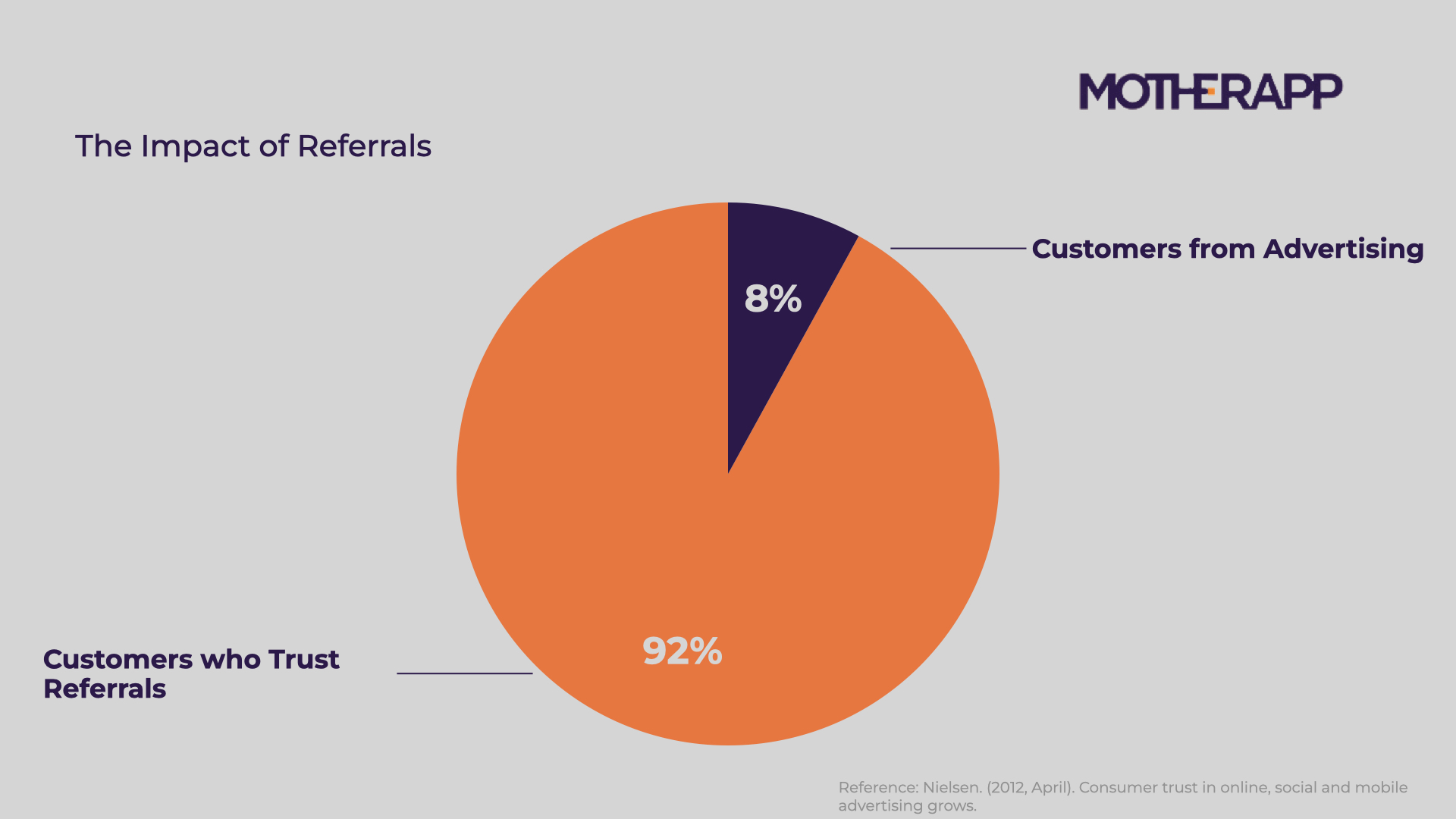
By cultivating loyalty among your existing customers, you create a network of advocates who can drive high-quality, cost-effective, and long-term leads to your business.
According to Nielsen, 92% of consumers trust referrals from people they know more than any form of advertising.
3 strategies for increasing customer loyalty
Building customer loyalty goes beyond simply making customers like a brand; it’s about creating continuous interaction and emotional connection. The core of loyalty is customer engagement—ensuring that customers feel valued and connected. So, how do we achieve this? We can break down the strategies for effective customer engagement into several actionable steps:
1. Offer Personalized Experiences
Personalized experiences are proven strategies that can significantly influence customer satisfaction, conversion rates, and even increase average order value (AOV).
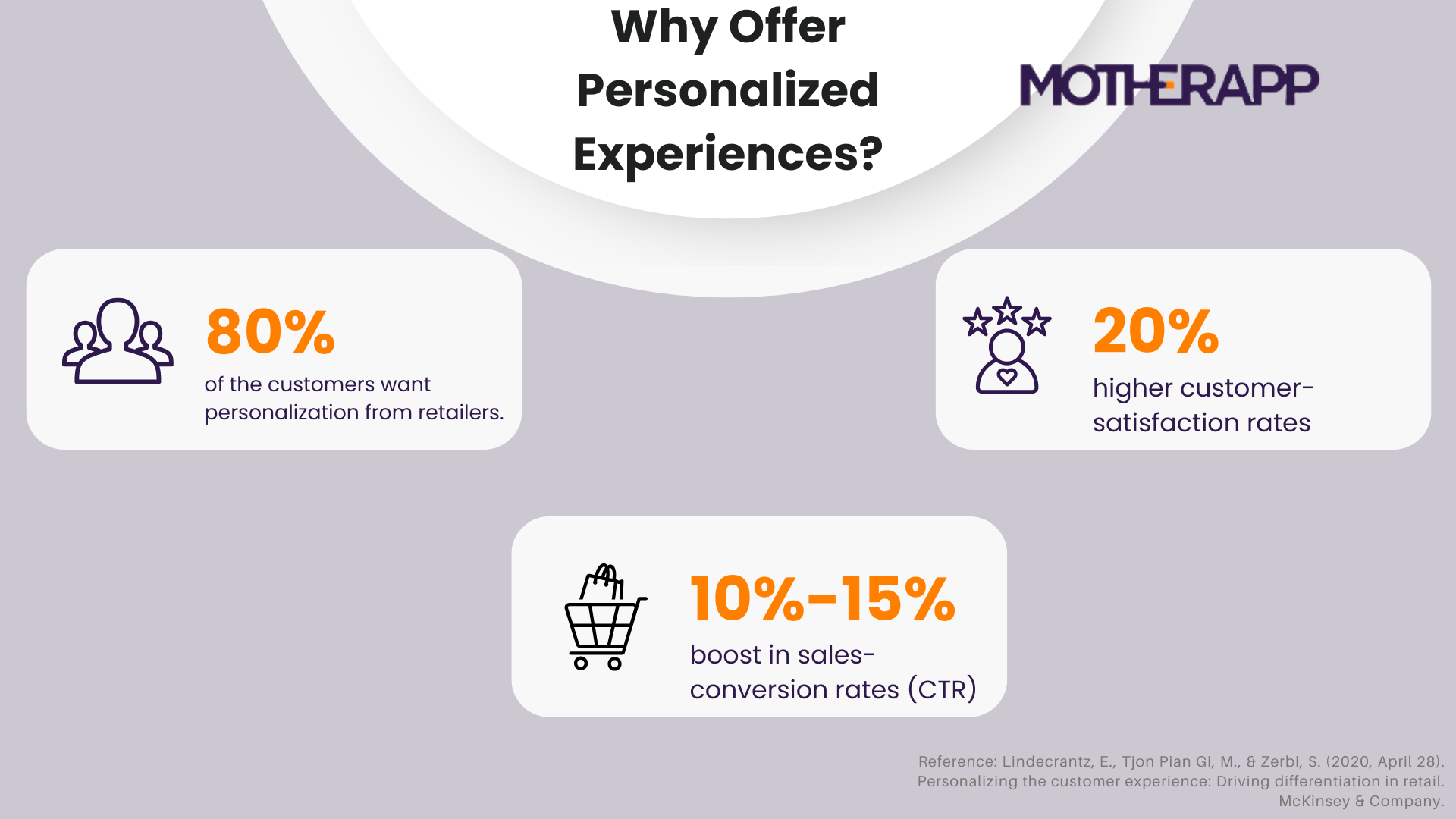
A survey of 1,000 US adults by Epsilon and GBH Insights found that 80% of the customers want personalization from retailers. Also, according to McKinsey, a positive customer experience is hugely meaningful to a retailer’s success: it yields 20% higher customer-satisfaction rates, a 10 -15% boost in sales-conversion rates (CTR).
Personalized services are typically associated with physical retail environments. Such services include tailored recommendations, exclusive offers, or VIP treatment like special lounge access or after-sales services. These experiences make customers feel valued and appreciated, which boosts loyalty and encourages repeat purchases.
However, before offering personalized service, the key first step is fully understanding your customers.
Advanced Personalization Strategy: Clienteling
Read More: What is Clienteling? Solutions for Retailers in 2025
Clienteling is a customer engagement strategy that uses detailed customer data to provide personalized, high-quality service.
By analyzing key customer information such as their demographic details, purchase history, browsing behavior on websites, and participation in activities like loyalty programs or offline events, businesses can gain valuable insights into their customers’ needs and behaviors. This information enables retail sales associates to offer tailored recommendations, creating stronger customer relationships—especially in service-driven industries like luxury goods.
With clienteling, businesses leverage data to deliver personalized in-store services that align with each customer’s individual preferences and shopping habits. For instance, if a sales associate can easily access a customer’s online purchase history or track their participation in loyalty programs, they can suggest products that match the customer’s tastes or offer exclusive deals based on past interactions. This personalized approach enhances the overall shopping experience and helps build lasting customer loyalty.
Online-Merge-Offline (OMO) Systems Can Help
Sustaining customer loyalty starts with personalization.
By analyzing customer data, brands can understand how individuals engage with them and tailor services to meet those unique needs.
However, integrating this siloed data remains a major challenge. A customer’s purchase history may sit in the POS system, digital behavior on the website, and loyalty activity in a separate app. Consolidating all this information is complex—and turning it into clear, actionable insights for marketing teams and frontline staff is even more difficult…
Success Case: Seamless Integration with Existing POS Systems
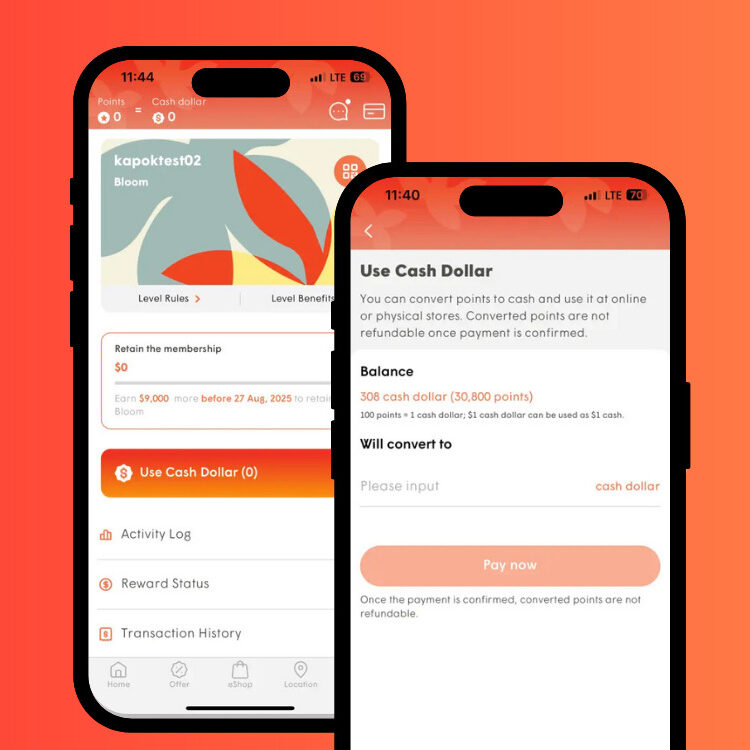
Motherapp assists Kapok in Building a Comprehensive Loyalty System
When Kapok launched its customer loyalty program, one of the biggest challenges was connecting the new system to both its online store and physical shops.
Motherapp played a key role in integrating the app with legacy POS systems and the membership database. Customers can now track all purchases and rewards in one app—online or offline—enabling an unified and seamless shopping journey across channels.
Read the full success story: Club Kapok — From Data Integration to Building Customer Loyalty
With years of system integration experience, Motherapp not only ensures a seamless transition that preserves existing member services, but also enables your team to analyze data through intuitive dashboards and insights—making customer engagement smarter and more effective.
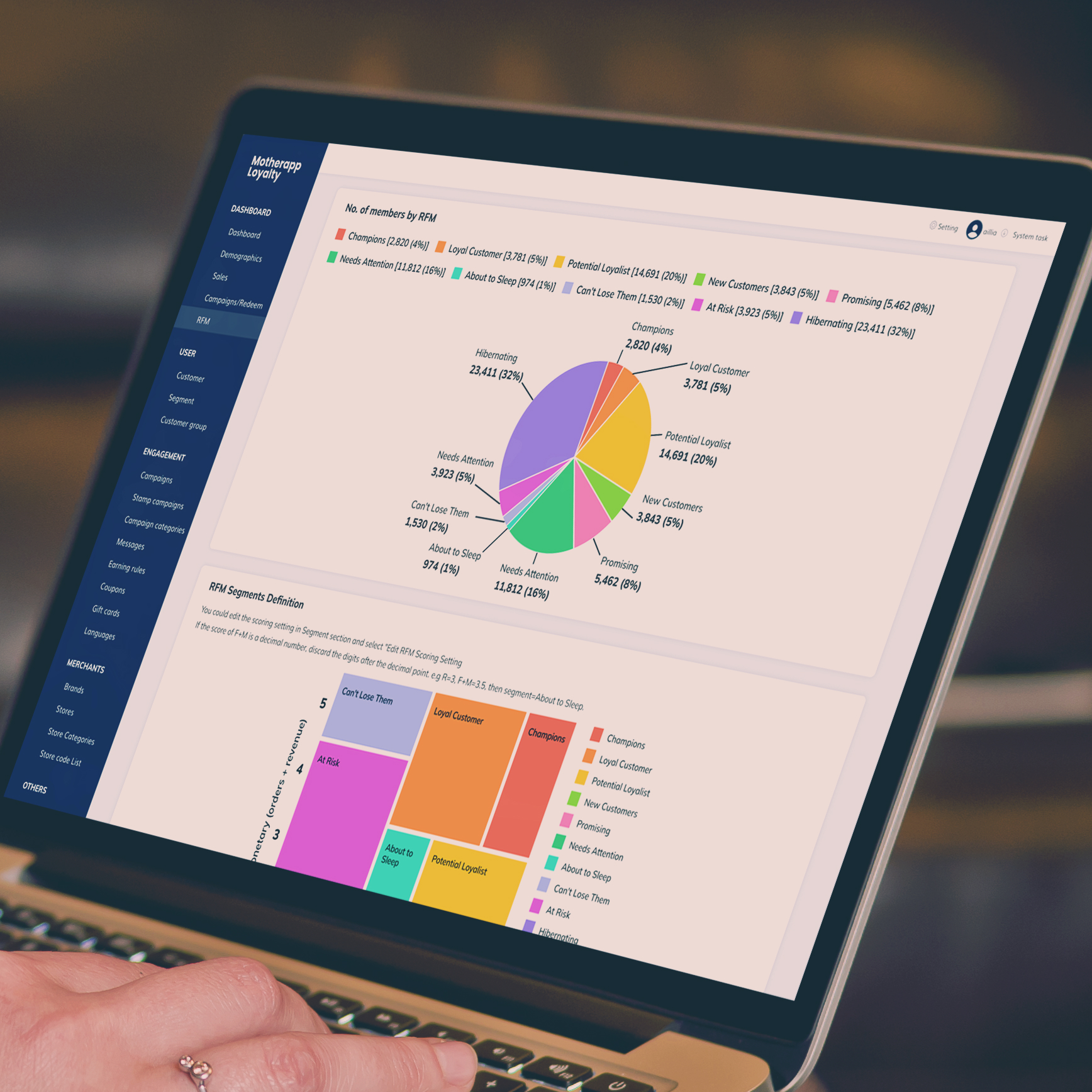
Motherapp simplifies the transition, maintains member services, and provides intuitive dashboards for smarter customer engagement.
2. Engage Customers Through Multiple Channels
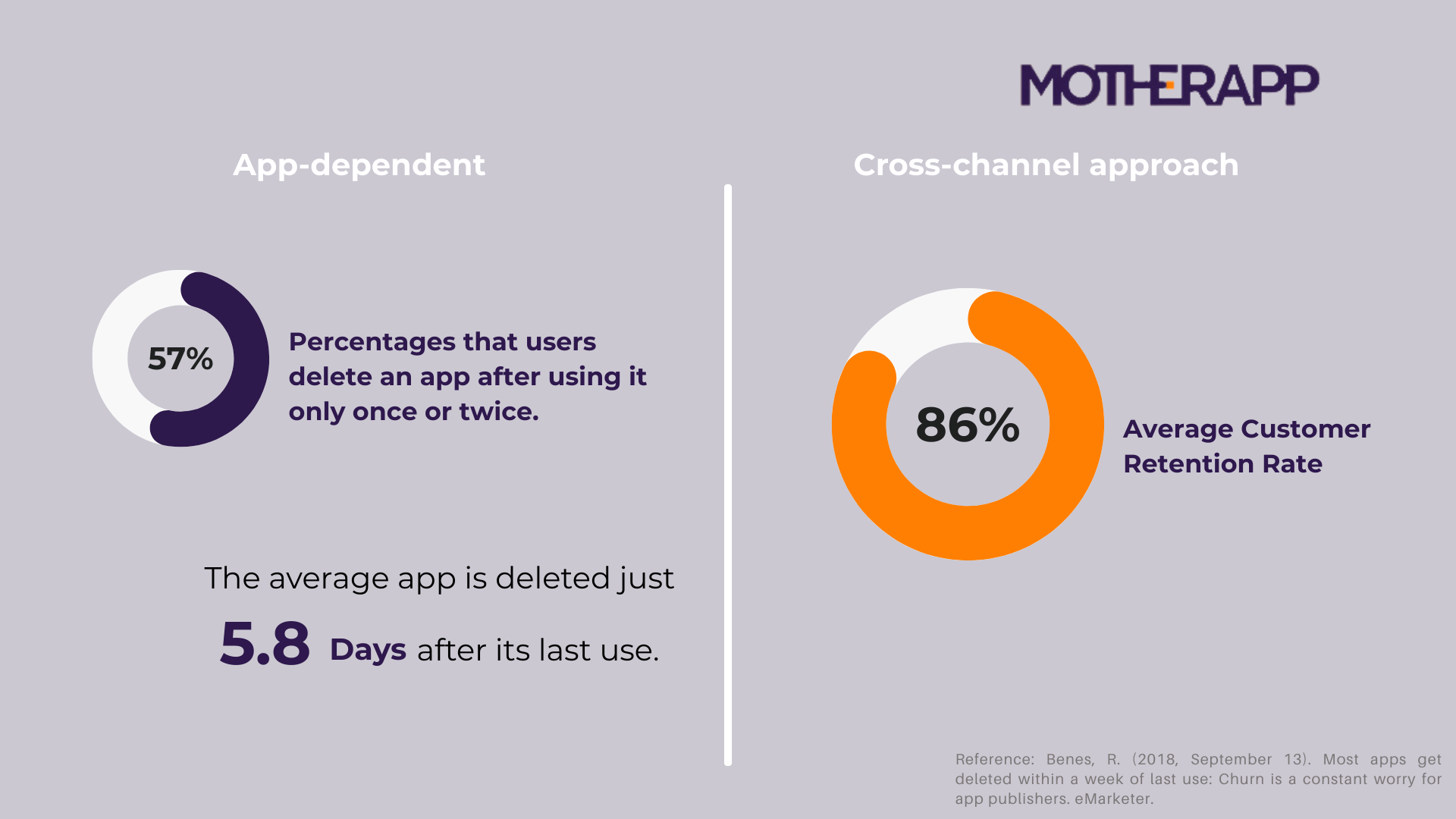
Multi-channel outreach improves customer retention.
According to EMARKETER , the average app is deleted just 5.8 days after its last use, and 57% of users delete an app after using it only once or twice. These numbers highlight how difficult it is to maintain consistent customer engagement through a single channel.
By contrast, brands that connect with customers across different platforms—see a retention rate of 89%, significantly higher than those using only one channel.
In today’s competitive landscape, an unified multi-channel strategy has become essential for building lasting loyalty. Shoppers expect brands to engage them across multiple channels—whether through email, app notifications, in-app messaging, SMS, or digital ads.
Message Center: Manage All Customer Communications in Omni-channel
To reach customers efficiently across multiple channels, many businesses have adopted marketing automation tools—such as email automation platforms or scheduled push notifications through mobile apps. However, these solutions often operate in silos, automating only parts of the customer journey.
Each system pushes out content separately, making it difficult to track performance or understand how customers are responding across different touch points.
A Message Center serves as a centralized hub for managing all customer communications—whether it’s email campaigns, app push notifications, SMS, or loyalty program messages. It enables marketing teams to plan, personalize, and schedule communications from a single interface, ensuring consistency, speed, and a more unified customer experience across every channel.
3. Implement an “Effective” Customer Loyalty Program
Customer loyalty programs are among the most powerful tools for building long-term relationships and improving customer retention.
Common types of loyalty programs include points-based systems, tiered memberships, and exclusive perks for repeat customers.
When done correctly, these programs foster a sense of belonging and appreciation, ultimately boosting customer satisfaction and increasing lifetime value.
Why Building Brand Loyalty Beats One-Time Promotions
While one-time push notifications may generate short-term attention, they don’t build lasting relationships. A well-designed brand loyalty program nurtures ongoing engagement, creating deeper emotional connections that drive consistent interactions and higher lifetime value.
Leverage Data for Precision Marketing
The key to a successful loyalty program is —delivering the right content to the right customers.
By leveraging data from past customer behaviors and interactions, businesses can serve personalized promotions that drive higher conversion rates.
Success Case: Asia Miles Adopted Smarter Loyalty Strategies
Asia Miles is a standout example of how data-driven strategies can enhance customer loyalty. By analyzing members’ spending patterns and lifestyle preferences, Asia Miles tailors its offers and campaigns to each customer segment.
For example:
- When a member frequently travels a specific route, Asia Miles offers personalized miles promotions for that destination—making it easier to redeem rewards while planning a trip.
- Based on a member’s shopping behavior, the platform recommends relevant miles redemption products and services, increasing engagement and perceived value.
Through these efforts, members feel valued and cared for, which strengthens emotional loyalty and drives continued engagement.
Read More: How Asia Miles X Motherapp build a successful, data-powered loyalty program.
Building Customer Loyalty Starts Here: Comparing 4 Top Solutions
According to McKinsey’s 2024 report, 37% of respondents say that cost remains a key priority.
The need to excel in service across multiple channels presents additional challenges for customer care leaders, especially when budgets are tight.
In today’s economic climate, many companies are re-evaluating the return on investment from their CRM and loyalty systems. While several well-established enterprise platforms dominate the market, businesses are increasingly concerned about the operational burdens these solutions bring—particularly during times of economic uncertainty.

Comparison of Popular CRM
Motherapp: Expertise in Retail O2O(Online to Offline)Solution
Motherapp brings years of experience in helping clients—especially in retail—streamline data silos and integrate systems. Our platform is designed with a focus on omni-channel solutions that integrate CRM and Loyalty Programs. Our solutions are tailored to meet the diverse needs of multiple departments within a company.
Whether it’s the marketing team seeking deeper customer insights and campaign automation, or front-line sales staff needing real-time access to customer data to deliver personalized service, Motherapp empowers every team member with the tools they need to enhance customer engagement and drive loyalty.
How to measure customer loyalty
1. Repeat Purchase Rate (RPR)
2. Customer Lifetime Value (CLV)
3. Redemption Rate (for loyalty programs)
4. RFM Model: Identify the True Value of Customers
The RFM Model helps businesses identify their most valuable customers using three key metrics: Recency, Frequency, and Monetary value.
- Recency – How recently a customer made a purchase.Customers who purchased recently are more likely to engage again, making this a strong indicator of current interest.
- Frequency – How often a customer makes a purchase.The more frequently someone buys, the more loyal they are to your brand.
- Monetary – How much a customer spends over time.Higher spenders are usually more invested in the brand and represent greater long-term value.
By analyzing these three dimensions, companies can segment customers more effectively, identify high-value groups, and deliver more targeted loyalty strategies—whether it’s personalized offers, push notifications, or long-term engagement plans.
Using the RFM model also supports smarter customer profiling, audience targeting, and market positioning, giving brands a clear data-driven edge in retention and loyalty growth.
Contact us now for more professional advice and one-on-one consultation.
Keep up with us – follow us on social media!

